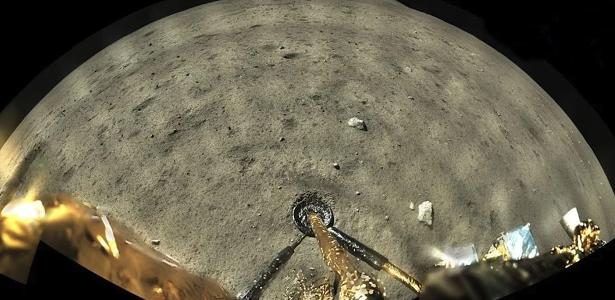Scientists claim to have found water, in liquid form, on the moon’s surface. The discovery was announced after analyzing rock and dust samples collected by the Chinese Chang’e-5 probe.
It’s the first time that water has actually been detected on the Moon in this case from soil samples. Until then, several studies had already indicated its existence – however, all of them are based on distant measurements or orbital observations.
The Chang’e-5 mission was launched in November 2020. Less than a month later, a capsule carrying 1.7 kg of material landed from our natural satellite in the Mongolian desert. Similar operations have not been carried out since the Soviet Luna 24 mission in 1976.
The shipment was sent to China for laboratory analysis. More than a year later, a study recently published in the journal Science Advances confirmed, liquid water was found at 120 parts per million (parts per million) in soil, and 180 parts per million in rocks—and that’s drier than that found on Earth.
According to the researchers, it was the solar wind that contributed most of the moisture to the lunar soil by carrying hydrogen there. Additional water may originate from the rocks from within the satellite itself, in deeper basaltic layers.
The study revealed that the moon became drier after a certain period, possibly due to the loss of gases from the mantle reservoir.
precious rocks
Prior to Chang’e-5, nearly 400 kg of material was collected from the lunar surface by astronauts on NASA’s Apollo missions and the Soviet Union’s Luna robotic probes. However, all of these samples were from very ancient rocks and soils, formed more than three billion years ago.
The Chinese expedition targeted an elevated volcanic area called Mons Ruemaker, estimated to be between 1.2 and 1.3 billion years old – one of the newest basaltic regions on the Moon.The formation process of our satellite.
The analyzes will also help scientists calibrate the “stopwatch” used to calculate the age of the solar system’s rocky surfaces. This is usually done by calculating the pits – the more pits there are, the more variables there are.
futuristic missions
The confirmed presence of water may be key to future missions and even the establishment of a manned lunar base. Through water (H2O), it is possible to extract oxygen (O2) for our survival as well as hydrogen (H2) for spacecraft fuel – to serve as a kind of future.”to stop“On the way to Mars, for example.
However, it is not only China that has plans for the satellite. Half a century after the flight that first took us to the moon in 1969, it’s back in vogue for NASA. In the modern age of space exploration, the US agency wants men — including the first woman — to walk its surface again by 2025, with the Artemis program.
For this year, several missions with unmanned probes are planned: at least three from the United States, one from the United Kingdom, one from Japan and one from Russia. The Chinese will continue their experiments with Chang’e-6 and Chang’e-7.

“Incurable thinker. Food aficionado. Subtly charming alcohol scholar. Pop culture advocate.”







More Stories
NASA Releases Selfie of Perseverance Rover Working on Mars
NVIDIA driver includes hidden Final Fantasy XVI profile
PlayStation Plus Extra and Premium saw a significant drop in players in July